Mount Kilimanjaro
Mount Kilimanjaro
Mount Kilimanjaro is the highest mountain in Africa, standing at 5,895 meters (19,341 feet) above sea level. It is located in northeastern Tanzania, near the border with Kenya, and is part of the Kilimanjaro National Park. Kilimanjaro is a free-standing mountain, meaning it is not part of a mountain range, and it is a dormant stratovolcano with three distinct volcanic cones: Kibo, Mawenzi, and Shira.
Key Features of Mount Kilimanjaro:
1. Volcanic Cones:
Kibo: The highest of the three cones, Kibo is the central and tallest peak, where Uhuru Peak, the highest point in Africa, is located. It is still considered dormant but could potentially erupt again.
Mawenzi: Standing at 5,149 meters (16,893 feet), Mawenzi is the second-highest cone and is known for its rugged, jagged appearance. It is no longer active.
Shira: The lowest of the cones, Shira, at 3,962 meters (13,000 feet), is a broad plateau that was once a volcanic peak but has since collapsed.
2. Ecological Zones:
Kilimanjaro’s slopes are home to several distinct ecological zones, each with its own unique climate and vegetation:
Cultivated Footslopes: At the base of the mountain, local communities grow crops like bananas and coffee.
Montane Forest Zone: This lush rainforest belt is home to diverse flora and fauna, including colobus monkeys, elephants, and a variety of bird species.
Heather and Moorland Zone: Above the forest, this area features heath plants, grasses, and unique plants like the giant groundsels and lobelias.
Alpine Desert Zone: A stark, dry landscape with limited vegetation, characterized by extreme temperature variations.
Arctic Zone: The summit zone is a cold, harsh environment with ice and snow. This area includes the shrinking glaciers and the snow-covered summit.
3. Glaciers and Climate Change:
Kilimanjaro’s glaciers are iconic but are rapidly shrinking due to climate change. The glaciers, such as the Furtwängler Glacier, have significantly reduced in size over the past century. Scientists predict that if the current rate of glacial melting continues, the ice fields could disappear within a few decades.
4. Climbing Routes:
There are several established routes for climbing Kilimanjaro, each offering different levels of difficulty and scenic views. Some of the most popular routes include:
Marangu Route: Known as the “Coca-Cola” route, it is the most popular and offers hut accommodation. It is considered the easiest route but has a lower success rate due to a shorter acclimatization period.
Machame Route: Known as the “Whiskey” route, it is more challenging than Marangu and offers varied scenery. It has a higher success rate due to better acclimatization.
Lemosho Route: A longer route that offers beautiful scenery and good acclimatization opportunities. It joins the Machame Route partway up the mountain.
Rongai Route: The only route that approaches Kilimanjaro from the north, near the Kenyan border. It is less crowded and offers a different perspective of the mountain.
Umbwe Route: The shortest and steepest route, known for its direct ascent. It is suitable for experienced climbers who are well-acclimatized.
5. Wildlife:
While the upper slopes of Kilimanjaro are largely devoid of large wildlife, the lower slopes and forests are home to various animals, including elephants, buffalo, leopards, monkeys, and various bird species. These animals are more commonly found in the forest and moorland zones.
6. Cultural Significance:
Kilimanjaro holds cultural significance for the local Chagga people, who live on its lower slopes. The mountain is also a symbol of Tanzania and is depicted on the country’s currency and national symbols. It has inspired countless explorers, writers, and artists over the years.
7. Conservation and Tourism:
Mount Kilimanjaro is a UNESCO World Heritage Site, and its conservation is managed by the Tanzania National Parks Authority (TANAPA). Tourism is a major contributor to the local economy, with thousands of climbers attempting to reach the summit each year. Efforts are ongoing to balance tourism with environmental conservation to protect the mountain’s unique ecosystems.
Summary
Mount Kilimanjaro is a natural wonder and an iconic symbol of Africa, known for its towering height, diverse ecological zones, and challenging climbing routes. As a destination for adventure and exploration, Kilimanjaro attracts thousands of visitors annually, offering a unique experience of climbing through multiple climate zones to reach the snow-capped summit. Conservation efforts are crucial to preserving this majestic mountain and its unique environment for future generations.

